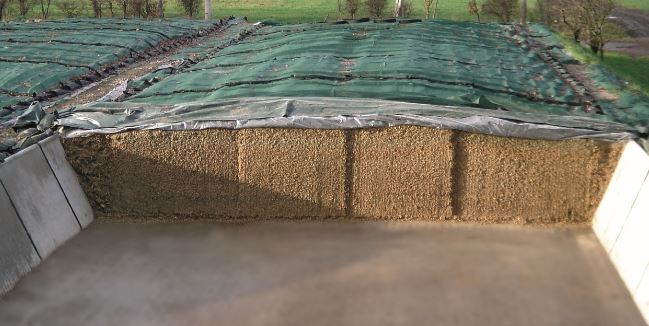Maximising Silage Quality
29 April 2022As silage time is just about upon us, it is worth thinking about the key steps in the silage making process to maximise nutritional quality and minimise nutrient losses as much as possible. This is even more crucial where fertiliser applications may have been reduced slightly this spring on the back of rising prices, which will affect both yield and the protein content.
Cutting
The feed value of silage is largely determined by the time of cutting, with higher protein and metabolisable energy and less fibre the earlier the grass is cut. While this will compromise yield, earlier cutting of 1st and subsequent cuts may allow an extra later cut depending on the season. Alternatively winter forage stocks could be boosted by making wholecrop or cutting more acres for wholecrop.
Do not be tempted to cut grass closer to the ground to add quantity as this risks taking soil into the pit, leading to an unfavourable fermentation. It also increases the amount of stalk or fibre in the clamp, reducing nutritional quality. A residual of 6-7cm is recommended to allow good regrowth and minimise soil contamination.
Wilting
Rapid wilting is key to minimise excessive sugar and protein losses. Aim for a minimum dry matter of 30% and no more than a 24-hour wilt. Water loss is greatest in the first two hours after cutting so aim to leave a wide swath behind the mower. Conditioners are better used on stemmy crops to bruise the stem and increase wilting speed by up to 20%. Leafy crops should not need conditioning as water will still be lost through the pores once the crop has been cut. The longer the wilting time the more spoilage microorganisms are on the crop that will compete with lactic acid producing bacteria, leading to poorer fermentation, less stable silage and nutrient losses.
Compaction and sealing
Chop length should vary with dry matter and the drier the crop, the shorter the chop length required to get good compaction. With wetter silages a longer chop length should be used (see table below). It is critical that longer chopped material does not compromise how well the clamp is compacted. Ideally fill the pit in layers of six to nine inches and roll continuously as loads are layered into the clamp. Any thicker than nine inches runs the risk of air pockets forming which will lead to slower fermentation and poorer quality silage, with growth of moulds and yeasts and heating when the clamp is opened. If continuing to fill the clamp the next morning, do not roll first. Add another layer, then roll to avoid squeezing out carbon dioxide produced by the fermentation and replacing with oxygen, causing a slower, poorer fermentation and increased nutrient losses.
| Dry matter (%) | Chop length (cm) |
|---|---|
| < 20% | 7.5 - 10 |
| 20 - 30% | 2.5 - 5 |
| > 30% | 1.5 - 2.5* |
*if fed along with a high maize silage diet, a longer chop length may be required to provide effective fibre.
Effective sealing of the clamp will go a long way to helping reduce waste. Oxygen barrier film products effectively seal the top of the clamp by clinging to the silage for optimal fermentation conditions, keeping oxygen out. Use underneath your normal plastic sheet. Black plastic is porous and can let in two litres of oxygen per m2/day. With very high dry matter silage, direct cut some fresh grass and layer on top to seal. If filling the clamp the following morning, sheet the clamp overnight. Clamps left unsheeted overnight can have up to 5% dry matter loses.
Additives
Silage additives are well proven to speed up fermentation resulting in a quicker drop in pH, lower dry matter and nutritional losses, less microbial growth and spoilage at feed out and improved animal performance. Various additives are available with some more suited to high dry matter or low dry matter crops. They range from bacterial inoculants, food grade preservatives, acids, enzymes or a combination of products. Preservatives tend to be more beneficial on high dry matter crops and acids are recommended for very wet crops. Always ask to see data on improvement in animal performance when considering what additive to use as this will give you a better idea on your investment return.
lorna.macpherson@sac.co.uk; 07760 990901
Sign up to the FAS newsletter
Receive updates on news, events and publications from Scotland’s Farm Advisory Service

